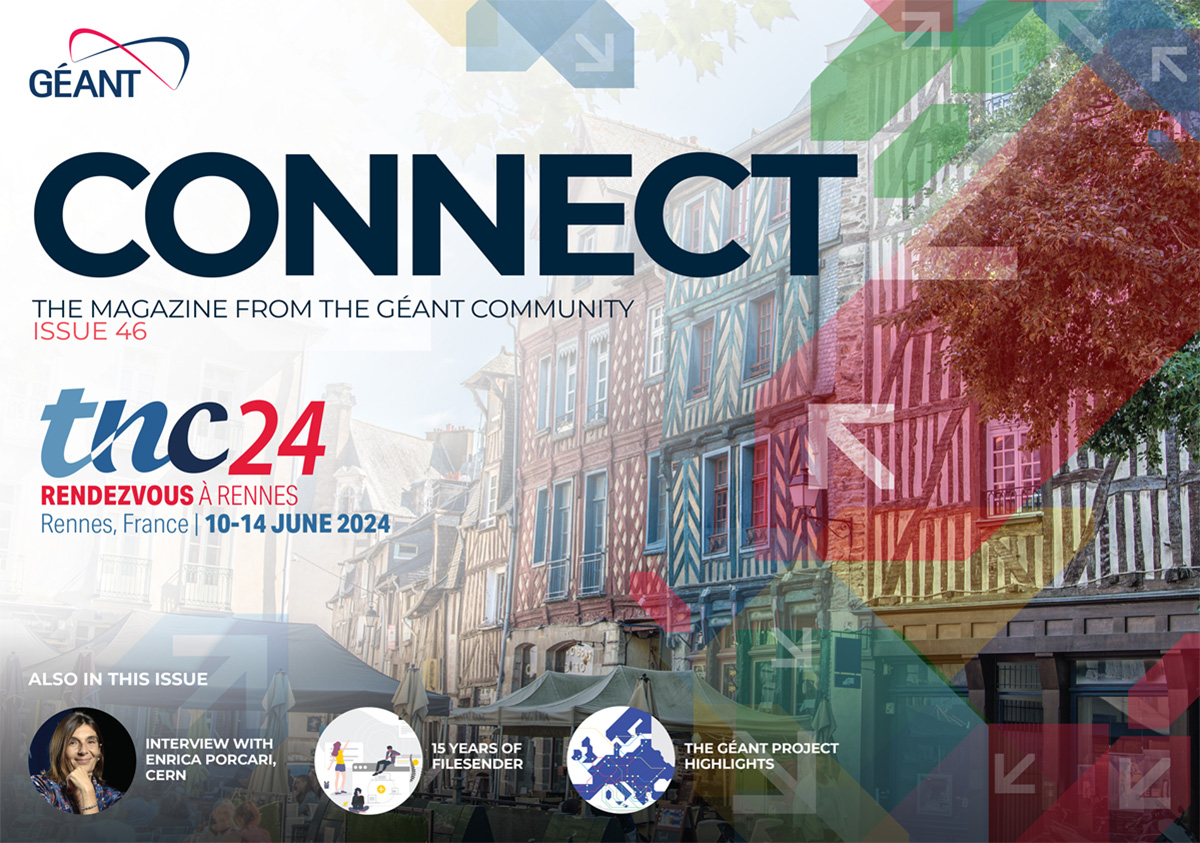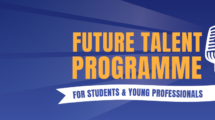Brilliant Failures: fostering creativity and pushing boundaries
We met with Professor Paul Iske who will be giving the opening keynote at TNC24. Professor at the School of Business and Economics at Maastricht University, Paul works on service and social innovation and his mission is to make organisations smarter and more innovative. He is also a founder of the ‘Instituut voor Briljante Mislukkingen’ (Institute for Brilliant Failures), where the focus is to create environments in which innovation and agile entrepreneurship can thrive whilst understanding their complex nature. In his thought-provoking keynote, “Brilliant Failures: Working together, failing together, learning together” Professor Iske, recognising the inevitability and fundamental role of failure, also highlights the need for Psychological Safety when taking risks, and introduces the concept of Failure Intelligence.
Paul, thank you so much for joining us in Rennes, we are looking forward to your opening keynote. What are “Brilliant Failures” and why they are particularly important in R&D?
First of all, it is a great pleasure for me to join the TNC24 and to share my passion about accepting and learning from Brilliant Failures! And yes, Brilliant Failures are fundamentally different from ‘regular’ failures or mistakes. Everyone makes mistakes, at least, I do. But in R&D, a failure can happen without any mistake being made. Einstein already said it: “If we knew what we are doing, we wouldn’t call it research”. So, R&D is a risky business, and we should anticipate that things might not give the results we are looking for and thus, failure is an option. A Brilliant Failure is characterised by a high score of the Brilliancy factor, that can be calculated via the VIRAL-formula: B = V x I x R x A x L, where the V stands for Vision (is there potential value), I for Inspiration, R for Risk management (don’t take too much risk, but also don’t take too little risk, since that leads to missed opportunities), A for Approach (work together, prepare, make use of existing knowledge), and L for Learning (are there lessons learned? Are they shared and used?). If the score on all five factors is high, then we are dealing with a Brilliant Failure and that is really a step forward, not a step backward!
What does it take to prepare individuals and teams for failure and build on the Psychological Safety needed to accept failure? Could you highlight some common misconceptions about failure, and how they can be addressed?
Failure happens anywhere in life, no matter what the intentions are: in business, sports, love, arts, science… So, it is important to accept this as a given and find the best way to deal with this fact. It is certainly not the smartest tactic to ignore, condemn, hide or ridicule failure, because it will make people cautious before starting potentially important things, simply because they might fail. Furthermore, it will discourage people to share their experiences and because of that, knowledge gets lost. Therefore, it should be equally normal to talk about Brilliant Failures as it is for successes. In both cases we are dealing with good people, working hard to achieve something meaningful, resulting in new insights. Especially, the Brilliant Failures should be recognised as progress and not as a waste of money, time, energy or whatsoever. It is a misconception that failure can be avoided, especially in complex dynamic environments, which often is the case when we deal with R&D.
How can organisations learn from failure and develop Failure Intelligence?
It is often said that one can learn from failure, and that is so true. But what is the best way to do this? When I thought about this, I was inspired by some things I learned about the concepts of intelligence and learning. In fact, the basis of intelligence is pattern recognition. Think about computer-based intelligence, including AI. Here, patterns in large amounts of data, like numbers, figures, videos, etc. are recognised, leading to a piece of advice, a decision, a conclusion and/or action. The term recognise highlights that these patterns were previously cognised, or learned, including the corresponding conclusion, advice, etc. This brought me to the idea to look for patterns in failing and eventually, I found sixteen of them. When you familiarise yourself with these patterns, you will be able to recognise them in your context. This might be before you start something, during or afterwards. At the Institute of Brilliant Failures, we use these patterns in analysing projects and use them to systematically report on the learnings. So, we apply a technique of semi-structured narratives, highlighting the intentions of a project, the approach, the outcome and the learnings. By doing so, Failure Intelligence is growing, because it becomes increasingly easy to identify the relevant failure patterns including the best way to deal with them.
You say that the road to failure can become the road to success. How can organisations create a culture that embraces and learns from failure rather than fearing it?
I have never seen a major development happening by following a straight line from A to B. I have been Head of Innovation of a major bank in the Netherlands, and I have never seen a business plan becoming the reality. Life is always full of surprises. The value of failure depends on how we deal with them. Being afraid and trying to ignore them doesn’t bring us any value at all. This means that organisations should consciously prepare for, accept and learn from failure. This starts at the top of the organisations which should consistently promote and reward responsible risk taking and sharing all experiences: successes and failures alike. There are many small steps an organisation can consider to improve the climate for ‘trial and error’, but it all starts with the shared vision that R&D without failure is an illusion and that people who try, deserve appreciation, irrespective of whether they are successful or not.
Could you share some examples of brilliant failures that have had significant positive impacts on innovation or progress?
Thomas Edison said it very clearly: “I didn’t fail 100 times, I developed a light bulb in 100 steps.” And this is what we see everywhere. It is also reflected in approaches like agile working or scrum, where the decision about the next step depends on the outcome of the previous one. Serendipity also plays an important role in R&D. Think about discoveries like Viagra (originally intended as a drug for Heart Failure, Angina Pectoris), Post-It (based on a failed glue) and many others. But in general, learnings from the past fuel future success. Like Isaac Newton said: “If I have seen further [than others], it is by standing on the shoulders of giants.” And these giants are both people who succeeded as well as those who failed. One also sees successes in business based on previous failures, when looking at companies who are successful after the first market entrant failed as they (the second ones) benefit from the first one’s learnings. Facebook was not the first social media platform, but learned from its predecessors. European research shows that ‘Entrepreneurial Restarters’ on average add more economic value than a first-time starter, because they can apply the lessons learned from their first attempt. I strongly believe in the power of the ‘Second Chance’!
And finally, do you apply your Brilliant Failures philosophy to your own career and personal life? How?
Of course, I had my own failures, some brilliant, others less brilliant. I invented the predecessor of LinkedIn in 1997, while working for Shell. I developed a system, MASTER (Mapping System for Technical Expertise and Research), which was so promising that I left Shell and tried to take it to the market. But other companies didn’t yet see the added value. In other words: I was too early and too early is also not in time. Important lesson learned! Also, in my job at ABN AMRO, I had to accept failed projects and learned how important it is to support and recognise the people involved. The projects might have failed, but that doesn’t mean that they failed. And this is becoming increasingly my view on life in general, including my own activities. If something fails, it might be something I don’t like, but if it is a Brilliant Failure, I don’t criticise myself, which makes it much easier to deal with. If I lose a tennis match, which happens on a very regular basis, I apply the VIRAL-formula and have to come to the conclusion that the only reason I failed, is lack of talent…
Would you like to discover how Professor Iske and his team at the Institute of Brilliant Failures embrace failure as an important learning moment, prepare to be open to the unknown and learn from the unexpected? Visit the Institute of Brilliant Failures’ website to find out more: https://www.briljantemislukkingen.nl

Read or download the full magazine here







